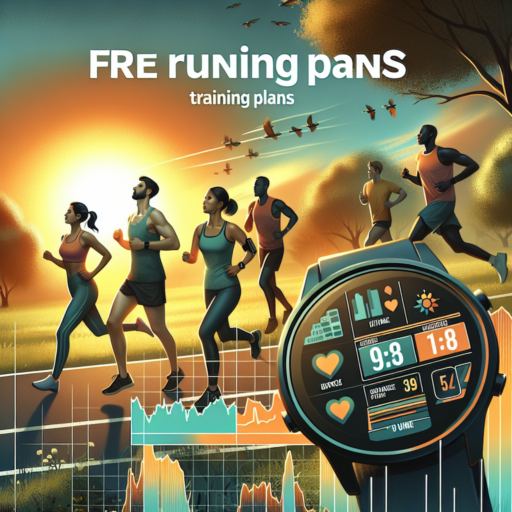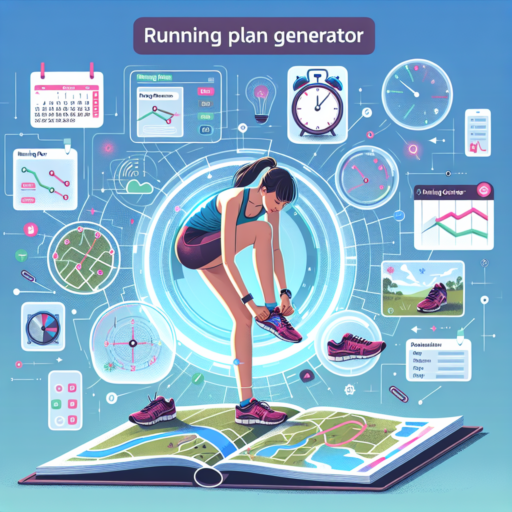How to Start Training for a 10K: A Step-by-Step Guide
Embarking on a journey to run a 10K is an exciting challenge that requires dedication, planning, and the right strategy. Whether you’re a novice runner or someone looking to step up from 5Ks, starting your training on the right foot is crucial for success. This guide will walk you through the fundamental steps to prepare you for your 10K goal, ensuring you develop endurance, speed, and confidence.
Develop a Realistic Training Schedule
The first step in your 10K training involves creating a realistic training schedule. Consider your current fitness level and life commitments to develop a plan that gradually increases in intensity without overwhelming you. A typical 10K preparation schedule spans 8 to 12 weeks and incorporates varied runs, rest days, and cross-training sessions. Starting slow, with shorter distances and gradually increasing the length of your runs, allows your body to adapt and prevents injury.
Incorporate Strength and Flexibility Training
While running is the centerpiece of your 10K training, strength and flexibility exercises play an essential role in enhancing your performance and reducing the risk of injury. Focus on core, leg, and glute strengthening exercises, as well as flexibility routines like yoga or Pilates, at least twice a week. This balanced approach not only improves your running efficiency but also builds the resiliency your body needs to handle increased mileage and intensity.
The Best 10K Training Plans for Beginners
Embarking on the journey to run a 10K race is an exciting challenge, especially for beginners. Choosing the right 10K training plan is crucial to cross the finish line with confidence and, more importantly, enjoy the process. These plans are designed to guide beginners through step-by-step workouts, gradually increasing in difficulty to build stamina, endurance, and speed. Let’s delve into the core components that make up the best training regimens for novice runners.
Key Elements of an Effective 10K Training Plan for Beginners
First and foremost, beginner training plans should start with the basics, focusing on establishing a running habit. An ideal plan integrates a mix of running, walking, and resting to prevent injuries while progressively improving one’s running capacity. It often includes three to four days of running each week, ensuring ample rest and recovery. Such plans should also be flexible to adjust with personal schedules and include cross-training or strength training sessions to support overall runner’s strength and resilience.
Structured Progression and Variability
Equally important is the plan’s ability to increase mileage and intensity in a structured yet varied manner. This approach helps maintain motivation and prevents the training from becoming monotonous. Interval training, long slow distance runs, and tempo runs are integral parts of an effective 10K program. These elements work in concert to improve aerobic capacity, running economy, and speed. Beginners should look for plans that clearly outline progression week by week, allowing for measurable improvements and adjustments as needed.
Essential Gear for Your 10K Training Journey
Embarking on a 10K training journey requires not just determination and discipline but also the right gear to ensure success and prevent injuries. The essential equipment can significantly enhance your performance and comfort, making your training sessions more effective and enjoyable. Let’s dive into the must-have gear that will support you every step of the way.
Choosing the Right Running Shoes
At the heart of your 10K training gear is a reliable pair of running shoes. The importance of selecting shoes that offer adequate support, cushioning, and fit cannot be overstated. Proper running shoes reduce the impact on your joints, minimize the risk of injuries, and can even improve your running efficiency. Always get fitted at a specialty running store to ensure the best match for your foot type and running style.
Technical Wear for Comfort and Performance
Your choice of clothing plays a crucial role in your training comfort and performance. Opt for technical wear made from moisture-wicking fabrics to keep you dry and comfortable no matter the weather. This includes shirts, shorts, and socks designed specifically for runners. These garments are lightweight, breathable, and designed to reduce friction, ensuring you can focus fully on your running goals.
Nutrition and Diet Tips to Enhance Your 10K Training
Training for a 10K race goes beyond just logging miles. Your nutrition and diet play a crucial role in your overall performance and recovery. Understanding the balance of macronutrients, hydration, and timing can transform your training experience, making you feel stronger and more capable of tackling the challenging distance. Let’s dive into some nutrition and diet tips that can help enhance your 10K training regimen.
Focus on Carbohydrates: Carbohydrates are your body’s primary source of energy during high-intensity exercises like running. Incorporating a carbohydrate-rich diet is essential as it helps to increase glycogen stores in your muscles, which are crucial for endurance activities. Opt for complex carbohydrates like whole grains, fruits, and vegetables, which provide a slow and steady release of energy, keeping you fueled throughout your training sessions.
Protein for Recovery: Protein plays a significant role in the repair and recovery of muscle tissues damaged during rigorous training. Including a sufficient amount of protein in your diet helps to ensure the muscle healing process is efficient, preparing your body for the next run. Lean meats, fish, dairy, legumes, and plant-based proteins are excellent sources that should be evenly distributed across your meals.
Stay Hydrated: Hydration is often overlooked in training, yet it’s a pillar of any successful endurance program. Losing even a small percentage of your body’s water content can significantly impact performance. Aim to drink at least 2-3 liters of water daily, and adjust based on your sweat rate and external temperatures. Incorporating electrolyte-rich sports drinks or natural alternatives like coconut water can be beneficial during longer runs or on hot days to maintain electrolyte balance.
Incorporating Strength Training into Your 10K Prep
When preparing for a 10K, runners often focus solely on clocking miles, inadvertently overlooking the pivotal role that strength training plays in enhancing their performance. Incorporating strength exercises into your 10K prep is not just about building muscle; it’s about creating a well-rounded regimen that improves endurance, increases speed, and reduces the risk of injury. Below, we delve into the must-know aspects of integrating strength training into your running routine.
Key Benefits of Strength Training for Runners
First and foremost, understanding the benefits of strength training can be a significant motivator. Strength exercises fortify the muscles and joints, which bear the brunt of each step when running. This reinforcement not only aids in injury prevention but also in power development. Stronger muscles mean more forceful strides, contributing to better overall running efficiency. Additionally, a sturdy physique can handle the rigors of increased mileage, a fundamental aspect of 10K training.
Essential Strength Exercises for 10K Preparation
When it comes to specific exercises, focusing on the lower body and core can yield the best results for runners. Squats, lunges, and deadlifts target key running muscles, enhancing stability and power. Meanwhile, incorporating core workouts, such as planks and Russian twists, ensures that runners maintain proper posture and balance throughout their race. It’s crucial to start with lighter weights or bodyweight exercises and gradually increase the intensity to prevent overexertion and possible injuries.
Understanding the Importance of Rest Days in 10K Training
In the realm of endurance sports, the significance of rest days during 10K training cannot be overstated. While the allure of pushing oneself to the limits day after day is strong, incorporating scheduled days of rest is crucial for both physiological and psychological health. It is a common misconception that progress is solely made through continuous training. However, the reality is that the body needs time to repair and strengthen itself after workouts, which can only happen during periods of rest.
Physiological Benefits of Rest Days
From a physiological perspective, rest days are essential to prevent overtraining syndrome, which can lead to fatigue, decreased performance, and even injury. These days allow for the muscles to repair micro-tears, a natural result of intense physical activity. This process is fundamental for muscle growth and strength gains. Moreover, rest days help maintain a balanced hormone level, reducing the risk of stress-related hormones affecting the body’s ability to recover.
Psychological Advantages of Integrating Rest Days
Equally important are the psychological benefits afforded by rest days. Mentally, taking a break from regimented training schedules can help maintain motivation and prevent burnout. It ensures that running remains enjoyable and that long-term goals are achievable without the feeling of being overwhelmed. Furthermore, rest days can offer an opportunity to reflect on training progress, adjust goals, and strategize for upcoming sessions.
How to Avoid Common Injuries During 10K Training
Training for a 10K can be an exciting challenge but also comes with the risk of common injuries that can derail progress. Understanding how to prevent these injuries is crucial for a successful and enjoyable training experience. Emphasizing proper preparation, technique, and recovery strategies are key components to staying injury-free on your way to the finish line.
Develop a Solid Foundation
Starting with a solid base of physical fitness is essential to avoid overuse injuries, which are common in runners pushing their limits. Incorporating strength training into your regimen, focusing on core, hip, and leg strength, can provide the muscular support needed for running. Additionally, gradually increasing your mileage, limiting it to a 10% increase weekly, helps your body adapt without being overwhelmed, significantly reducing the risk of stress injuries.
Adopt the Right Technique
The importance of proper running form cannot be overstated in preventing injuries during 10K training. Utilizing a running coach or professional to analyze your form can provide valuable insights into corrections needed. Running with a slight forward lean, maintaining a straight posture, and ensuring your feet land under your center of gravity are crucial factors. Also, investing in the right footwear that fits your gait and offers adequate support is a pivotal step in injury prevention.
Remember, avoiding common injuries during 10K training is about being proactive rather than reactive. By focusing on preparation, adopting the right running form, and listening to your body’s needs, you can ensure a safe and effective training journey towards your 10K goal.
Techniques to Improve Your 10K Time and Performance
Improving your 10K time requires a blend of strategic training, proper nutrition, and adequate rest. To significantly enhance your performance, it’s not just about running more; it’s about running smart. Integrating a variety of techniques into your training routine can lead to substantial improvements. Below are several approaches to consider if you’re aiming to set a new personal best.
Interval Training
Interval training is crucial for increasing your running speed and stamina. By alternating between high-intensity sprints and low-intensity recovery periods, you can improve your cardiovascular efficiency, enabling you to maintain a faster pace for longer distances. Start by incorporating short sprints of 400 to 800 meters into your runs, followed by equal or slightly longer recovery periods. This method not only boosts your speed but also enhances your endurance, making those 10k runs feel less daunting.
Strength Training
While running is the cornerstone of any training plan, strength training plays a pivotal role in improving your 10K performance. Focusing on core, leg, and arm muscles can lead to better running economy and reduce the risk of injuries. Incorporate exercises like squats, lunges, planks, and push-ups into your routine twice a week. Strengthening your muscles supports your joints and improves your overall body mechanics, directly translating to faster and more efficient running.
Proper Nutrition and Hydration
Adequate nutrition and hydration are often overlooked aspects of training that can significantly impact your performance. Fueling your body with the right nutrients before and after your runs is essential for energy and recovery. A balanced diet rich in carbohydrates, proteins, and healthy fats helps support sustained energy levels during your runs. Furthermore, staying well-hydrated is critical, especially in the days leading up to your race, to prevent dehydration and improve endurance.
Mental Strategies for Conquering Your First 10K Race
Preparing for your first 10K race goes beyond physical training; it involves significant mental preparation to push through the challenges and reach the finish line. Understanding and employing powerful mental strategies can transform the daunting task of completing a 10K race into an achievable goal. This article delves into effective techniques that empower runners to mentally conquer their first 10K.
Set Realistic Goals
One of the fundamental mental strategies is setting realistic goals. Instead of aiming for perfection, focus on completing the race, even if it means walking parts of it. Establish short-term objectives, like weekly mileage targets or specific pace goals for smaller portions of the race. This approach breaks the race into manageable segments, reducing the mental burden and increasing the sense of achievement as each goal is met.
Visualize Success
Visualization is a powerful tool in an athlete’s mental toolkit. Spend time each day leading up to the race imagining yourself successfully completing each segment of the 10K. Envision crossing the finish line, the crowd’s cheers, and your own feelings of triumph. This technique not only prepares the mind for what to expect but also instills a deep belief in your ability to succeed.
By incorporating these mental strategies into your training regimen, you can significantly enhance your confidence and resilience, making the goal of concluding your first 10K race not just a possibility, but an imminent achievement. Running a 10K involves as much mental preparation as it does physical; training your mind is key to overcoming the challenge ahead.
The Ultimate Checklist for Race Day: Preparing for Your 10K
Participating in a 10K race is an exhilarating challenge that requires not just physical readiness but also meticulous preparation. Ensuring you have everything you need leading up to, during, and post-race can significantly impact your performance and experience. The following checklist is designed to guide runners in their preparation for race day, ensuring they arrive at the starting line feeling confident and ready.
Pre-Race Essentials
- Registration Confirmation: Verify your race registration and bib number ahead of time.
- Running Gear: Lay out your chosen outfit, including running shoes, socks, and weather-appropriate apparel.
- Nutrition and Hydration: Plan your pre-race meal and hydration strategy to ensure you’re well-fueled and hydrated.
Race Day Must-Haves
On the day of the race, your focus should shift to implementing your plan smoothly. This includes a few critical aspects:
- Weather-Appropriate Gear: Ensure you have checked the weather forecast and adjusted your running gear accordingly.
- Timing Device: Whether it’s a smartwatch or a basic stopwatch, make sure it’s fully charged and functional.
- Energy Boosters: Pack energy gels or bars to help maintain your stamina throughout the race.
Adhering to this checklist can demystify the preparation process, making your race day experience as smooth and enjoyable as possible. Remember, success on race day starts with comprehensive preparation. By ticking off each item on this ultimate checklist, you’re setting the stage for a memorable and gratifying 10K run.










